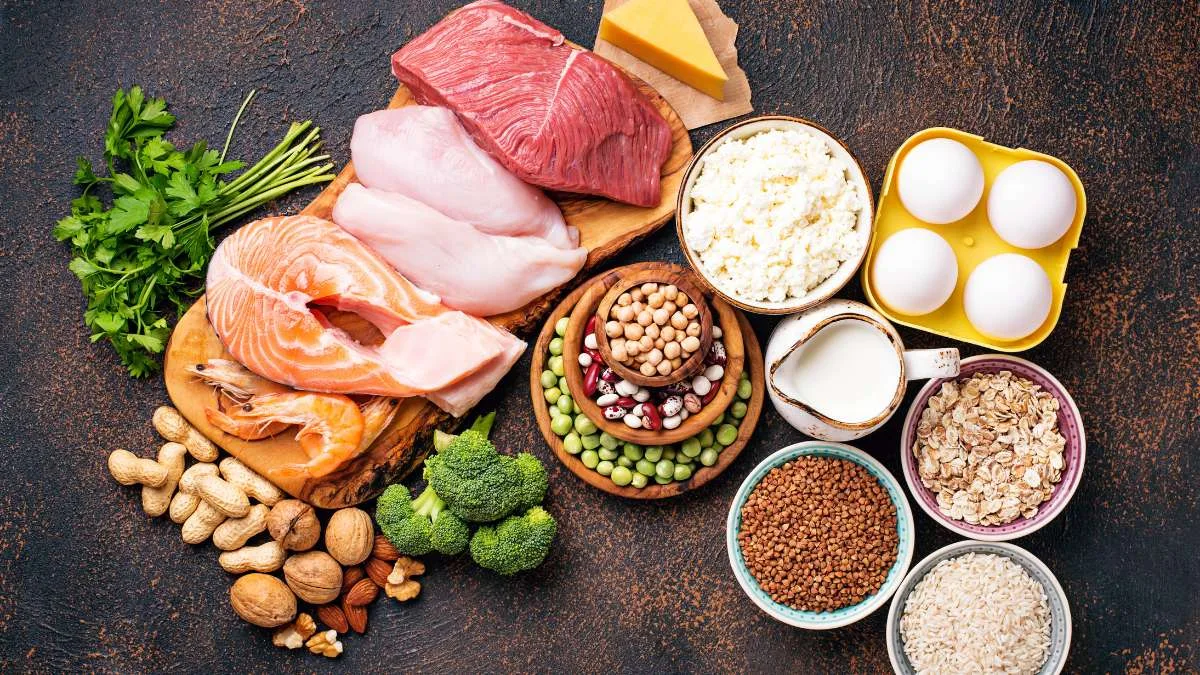15 High-Protein Recipes That Support Healthy Weight Loss
In the journey toward weight loss, protein has emerged as a nutritional superstar. Unlike crash diets that leave you hungry and irritable, a protein-rich approach supports sustainable weight management while preserving muscle mass and keeping hunger at bay. This powerful macronutrient requires more energy to digest than carbohydrates or fats, meaning your body burns more calories processing it—a phenomenon known as the thermic effect of food.
But finding delicious, easy-to-prepare protein recipes that don’t become boring can be challenging. Whether you’re just beginning your weight loss journey or looking to overcome a plateau, this collection of 15 protein-packed recipes will revolutionize your meal planning while supporting your goals. From quick breakfasts to satisfying dinners and everything in between, we’ve got your nutrition needs covered with options that are as delicious as they are effective.
AdvertisementWhy Protein Matters for Weight Loss
The connection between protein and weight management isn’t just anecdotal—it’s backed by science. Research published in the American Journal of Clinical Nutrition found that increasing protein intake to 30% of total calories led participants to consume approximately 441 fewer calories per day without intentional restriction, resulting in significant weight loss.
According to comprehensive research published in the Journal of Nutrition and Metabolism, higher protein intake plays a key role in weight management strategies.
Protein works through multiple mechanisms to support your weight loss efforts:
- Enhanced Satiety: Protein triggers the release of hormones that signal fullness, helping you feel satisfied longer after meals. A 2015 study in the journal Nutrition showed that high-protein meals increased feelings of fullness by 31% compared to high-carbohydrate meals.
- Metabolic Boost: Your body expends more energy (calories) digesting protein compared to other macronutrients—about 20-30% of protein calories are used during digestion, versus 5-10% for carbohydrates and 0-3% for fats.
- Muscle Preservation: During weight loss, adequate protein helps maintain muscle mass, ensuring that most weight lost comes from fat stores rather than valuable lean tissue. This preserves your metabolic rate, making continued weight management easier.
- Blood Sugar Regulation: Protein helps moderate blood sugar spikes and crashes that can trigger hunger and cravings, making it easier to stick to your nutrition plan.
How Much Protein You Need
Protein requirements vary based on individual factors including weight, activity level, age, and specific goals. While the RDA (Recommended Dietary Allowance) suggests 0.8 grams per kilogram of body weight daily, this represents the minimum to prevent deficiency—not the optimal amount for weight loss.
For active individuals focused on weight management, research suggests a range of 1.2-2.0 grams of protein per kilogram of body weight daily. Here’s a simple calculation method:
- Convert your weight to kilograms (weight in pounds ÷ 2.2)
- Multiply by 1.6 (a middle-range target for weight loss)
For example, a 150-pound person would aim for approximately 109 grams of protein daily:
- 150 pounds ÷ 2.2 = 68.2 kg
- 68.2 kg × 1.6 = 109 grams of protein
Spreading protein intake throughout the day optimizes muscle synthesis and satiety benefits. Aim to include a quality protein source with each meal and snack rather than consuming the majority at a single sitting.
Disclaimer: These guidelines are general recommendations. Consult with a healthcare provider or registered dietitian for personalized advice, especially if you have kidney disease or other health conditions that may affect protein metabolism.
Breakfast Protein Recipes
1. Greek Yogurt Power Bowl
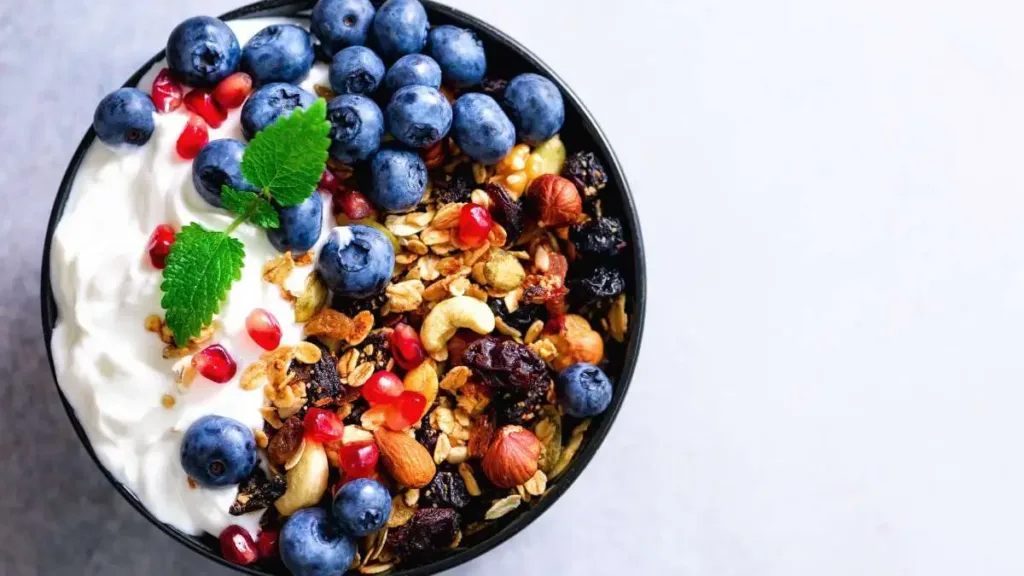
Preparation time: 10 minutes | Difficulty: Easy
Protein content: 25g | Calories: 310
Ingredients:
- 1 cup Greek yogurt (0% fat)
- 1/4 cup blueberries (fresh or frozen)
- 1 tablespoon chia seeds
- 1 tablespoon hemp seeds
- 1/4 cup low-sugar granola
- 1 tablespoon almond butter
- 1/2 teaspoon cinnamon
Instructions:
- Place Greek yogurt in a bowl.
- Top with blueberries, chia seeds, hemp seeds, and granola.
- Drizzle with almond butter and sprinkle with cinnamon.
- Mix slightly before eating to combine flavors.
This breakfast powerhouse combines complete protein from Greek yogurt with additional plant proteins from seeds, creating a meal that sustains energy levels throughout the morning while supporting muscle recovery from overnight fasting.
2. Spinach and Feta Egg White Muffins
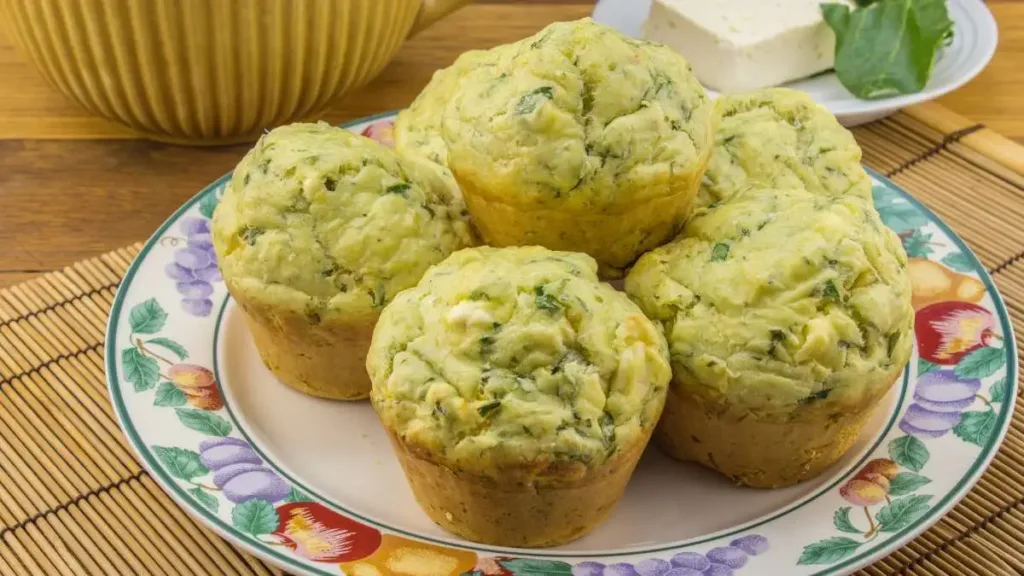
Preparation time: 30 minutes | Difficulty: Medium
Protein content: 18g per 2 muffins | Calories: 180
Ingredients:
- 2 cups egg whites (or 12 egg whites)
- 1 cup chopped spinach
- 1/4 cup crumbled feta cheese
- 1/4 cup diced red bell pepper
- 2 tablespoons chopped green onions
- 1/4 teaspoon dried oregano
- Salt and pepper to taste
- Olive oil cooking spray
Instructions:
- Preheat oven to 350°F (175°C) and spray a 12-cup muffin tin with cooking spray.
- In a large bowl, whisk egg whites until slightly frothy.
- Add remaining ingredients and mix well.
- Distribute mixture evenly among muffin cups.
- Bake for 20-25 minutes until egg muffins are set and slightly browned.
- Allow to cool for 5 minutes before removing from tin.
- Store in an airtight container in the refrigerator for up to 4 days.
These portable egg muffins make meal prep easy and provide a complete protein source with minimal fat, making them perfect for busy mornings or post-workout refueling.
3. Protein-Packed Overnight Oats
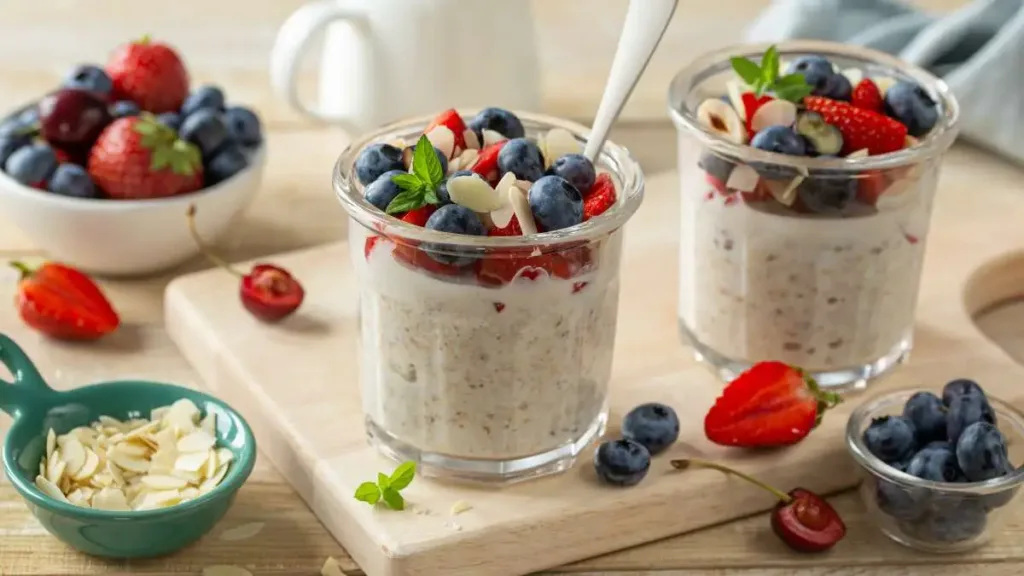
Preparation time: 5 minutes + overnight soaking | Difficulty: Easy
Protein content: 28g | Calories: 360
Ingredients:
- 1/2 cup rolled oats
- 1 scoop (25g) vanilla protein powder
- 1 tablespoon chia seeds
- 3/4 cup unsweetened almond milk
- 1/4 cup plain Greek yogurt
- 1/2 small apple, diced
- 1/2 teaspoon cinnamon
- 1 tablespoon chopped walnuts
Instructions:
- In a mason jar or container with lid, combine oats, protein powder, and chia seeds.
- Add almond milk and Greek yogurt, then stir well to combine.
- Fold in diced apple and cinnamon.
- Seal container and refrigerate overnight or for at least 4 hours.
- Before eating, top with chopped walnuts and additional cinnamon if desired.
This no-cook breakfast combines slow-digesting complex carbs with protein for sustained energy release, while chia seeds add fiber to promote fullness and digestive health.
Lunch/Dinner Protein Recipes
4. Mediterranean Chicken Meal Prep Bowls
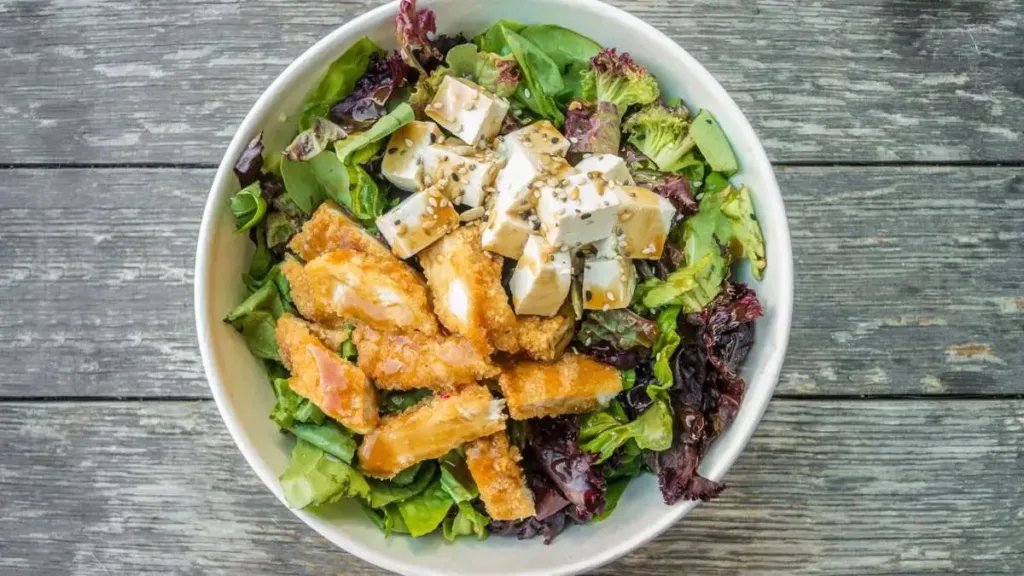
Preparation time: 40 minutes | Difficulty: Medium
Protein content: 35g | Calories: 420
Ingredients:
- 4 oz grilled chicken breast, sliced
- 1/2 cup cooked quinoa
- 1 cup mixed greens
- 1/4 cup diced cucumber
- 1/4 cup diced tomatoes
- 2 tablespoons red onion, thinly sliced
- 5 kalamata olives, pitted and halved
- 1 tablespoon crumbled feta cheese
- 1 tablespoon extra virgin olive oil
- 1 tablespoon lemon juice
- 1/2 teaspoon dried oregano
- Salt and pepper to taste
Instructions:
- Season chicken breast with salt, pepper, and oregano. Grill until internal temperature reaches 165°F.
- Cook quinoa according to package directions, using low-sodium broth instead of water for extra flavor.
- Assemble bowl with greens as the base, followed by quinoa.
- Arrange chicken and vegetables around the bowl.
- Top with olives and feta cheese.
- Mix olive oil, lemon juice, oregano, salt, and pepper in a small container.
- Drizzle dressing over bowl when ready to eat.
This balanced meal provides complete protein from chicken and quinoa, healthy fats from olives and olive oil, and plenty of fiber from vegetables, creating a satisfying lunch that aligns perfectly with Mediterranean diet principles proven to support weight management.
5. Lemon Garlic Baked Cod with Roasted Vegetables
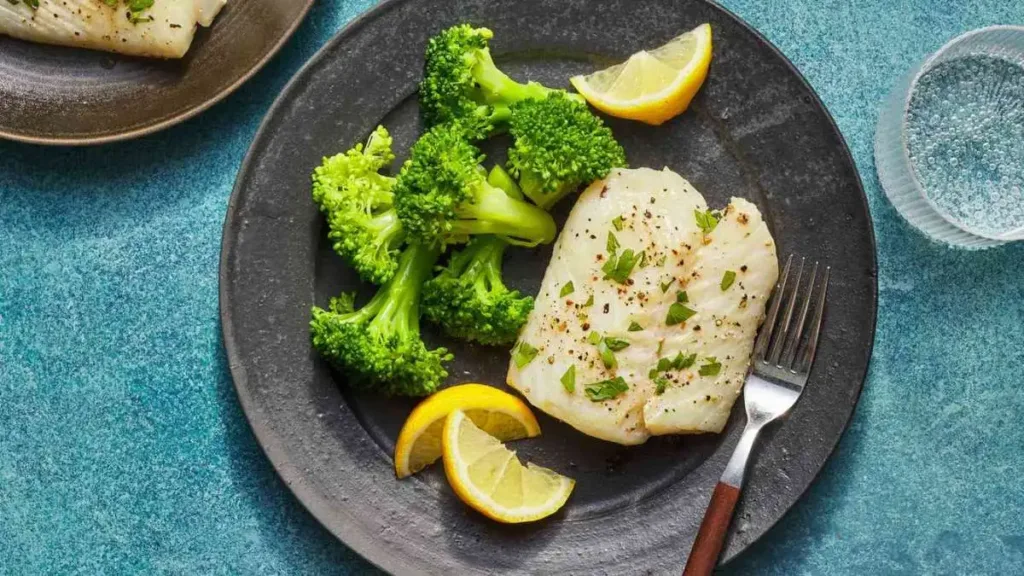
Preparation time: 35 minutes | Difficulty: Easy
Protein content: 30g | Calories: 320
Ingredients:
- 5 oz cod fillet
- 1 tablespoon olive oil, divided
- 1 clove garlic, minced
- 1 teaspoon lemon zest
- 1 tablespoon lemon juice
- 1 cup broccoli florets
- 1 cup cauliflower florets
- 1/2 red bell pepper, sliced
- 1/2 teaspoon dried thyme
- Salt and pepper to taste
- Lemon wedges for serving
Instructions:
- Preheat oven to 400°F (200°C).
- Toss vegetables with 2 teaspoons olive oil, half the garlic, thyme, salt, and pepper.
- Spread vegetables on a baking sheet and roast for 10 minutes.
- Meanwhile, place cod on a piece of parchment paper.
- Mix remaining olive oil, garlic, lemon zest, lemon juice, salt, and pepper.
- Pour mixture over cod and seal in a parchment paper packet.
- Place cod packet on the baking sheet with vegetables and continue roasting for 12-15 minutes until fish flakes easily.
- Serve with additional lemon wedges.
White fish like cod provides lean protein with minimal calories, making it an excellent choice for weight loss. The vegetables add volume, fiber, and nutrients while the parchment paper method requires minimal added fat.
6. Turkey and Black Bean Stuffed Peppers
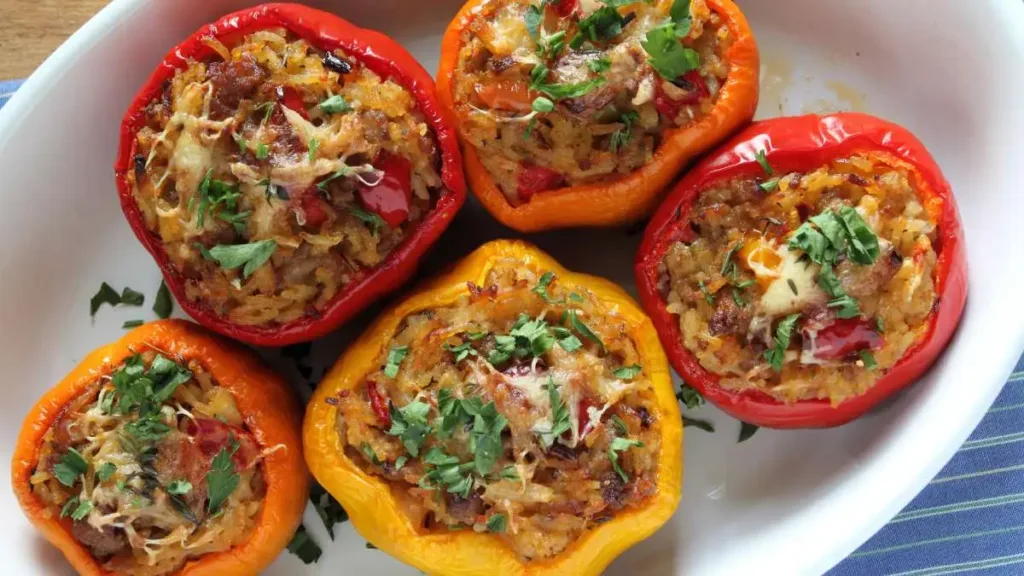
Preparation time: 50 minutes | Difficulty: Medium
Protein content: 32g | Calories: 380
Ingredients:
- 2 large bell peppers, halved and seeded
- 8 oz lean ground turkey
- 1/2 cup black beans, rinsed and drained
- 1/4 cup quinoa, uncooked
- 1/2 cup low-sodium chicken broth
- 1/2 small onion, diced
- 1 garlic clove, minced
- 1/4 cup corn kernels
- 1/2 teaspoon ground cumin
- 1/2 teaspoon chili powder
- 1/4 teaspoon paprika
- 1/4 cup reduced-fat shredded cheddar cheese
- 2 tablespoons chopped cilantro
- Salt and pepper to taste
Instructions:
- Preheat oven to 375°F (190°C).
- Place pepper halves cut-side up in a baking dish.
- Cook quinoa in chicken broth according to package directions.
- In a skillet over medium heat, brown turkey with onion and garlic.
- Add black beans, corn, and spices. Cook for 2 minutes.
- Stir in cooked quinoa and remove from heat.
- Fill pepper halves with turkey mixture.
- Cover with foil and bake for 25 minutes.
- Remove foil, sprinkle with cheese, and bake for 5 more minutes until cheese melts.
- Garnish with cilantro before serving.
This complete meal provides protein from multiple sources (turkey, beans, quinoa, and cheese) while the peppers add volume and essential nutrients with minimal calories, supporting both weight loss and overall health.
7. Asian-Inspired Tofu and Vegetable Stir-Fry
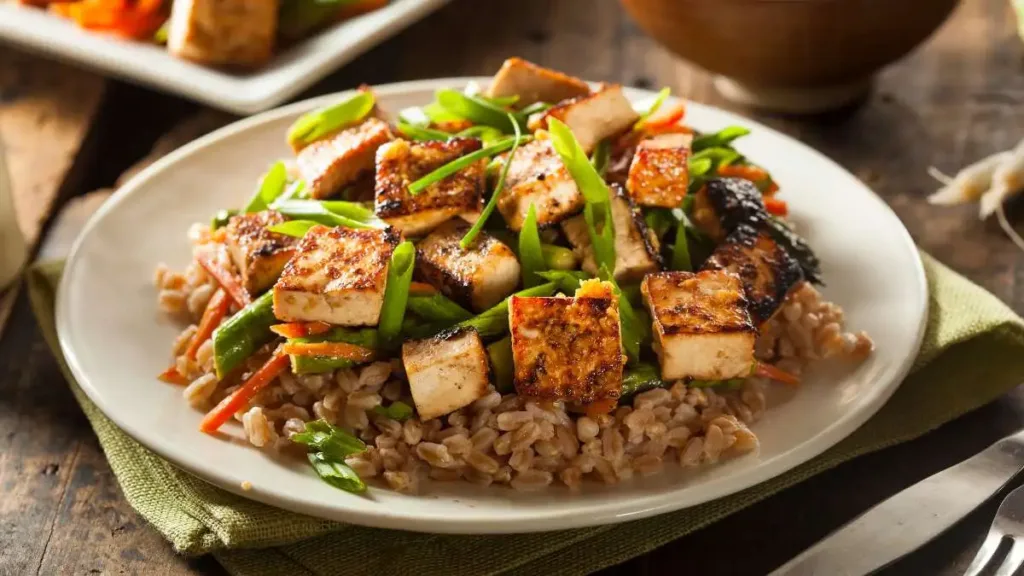
Preparation time: 30 minutes | Difficulty: Medium
Protein content: 24g | Calories: 350
Ingredients:
- 6 oz extra-firm tofu, pressed and cubed
- 2 cups mixed vegetables (broccoli, snap peas, carrots, bell peppers)
- 1 tablespoon sesame oil, divided
- 1 tablespoon low-sodium soy sauce
- 1 teaspoon rice vinegar
- 1 teaspoon honey or maple syrup
- 1 teaspoon grated ginger
- 1 garlic clove, minced
- 1 tablespoon cornstarch
- 1/4 cup vegetable broth
- 1 tablespoon sesame seeds
- 1 green onion, sliced
- 1/2 cup cooked brown rice (optional)
Instructions:
- Press tofu between paper towels with a heavy object for 15 minutes to remove excess moisture.
- Cut tofu into 1-inch cubes and toss with cornstarch.
- Heat 2 teaspoons sesame oil in a wok or large skillet over medium-high heat.
- Add tofu and cook until golden on all sides, about 5-6 minutes. Remove and set aside.
- Add remaining oil and stir-fry vegetables until crisp-tender, about 5 minutes.
- Mix soy sauce, rice vinegar, honey, ginger, garlic, and broth in a small bowl.
- Return tofu to pan, add sauce mixture, and cook until sauce thickens, about 2 minutes.
- Garnish with sesame seeds and green onions.
- Serve with brown rice if desired (adds approximately 100 calories).
This plant-based option provides complete protein from tofu while the rainbow of vegetables offers essential nutrients and fiber. The sauce delivers flavor without excessive calories, making this an excellent choice for vegetarians and those looking to incorporate more plant-based meals.
8. Slow Cooker Chicken and White Bean Chili
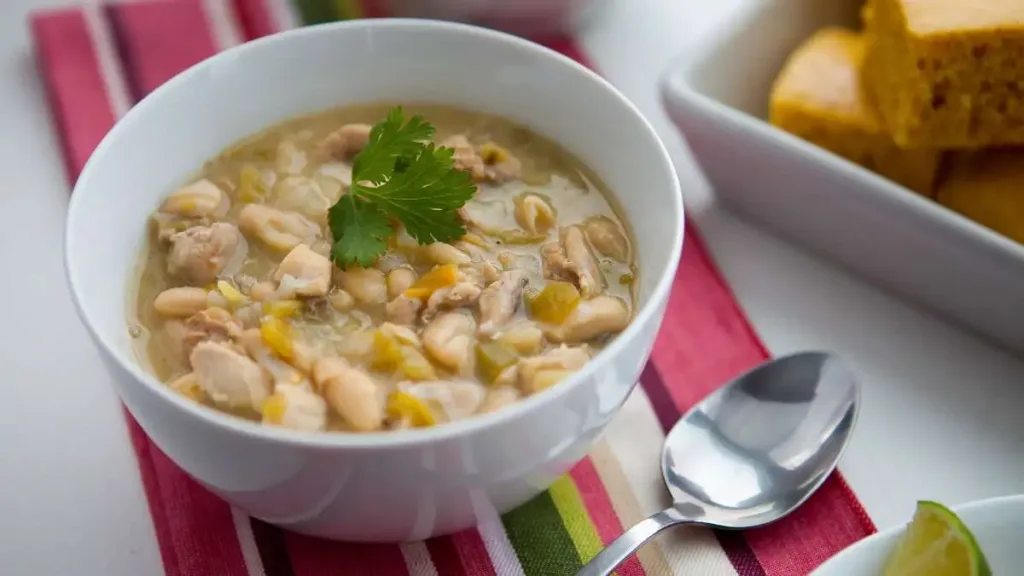
Preparation time: 15 minutes + 6 hours cooking | Difficulty: Easy
Protein content: 38g | Calories: 410
Ingredients:
- 1 lb boneless, skinless chicken breasts
- 1 can (15 oz) white beans, drained and rinsed
- 1 medium onion, diced
- 1 green bell pepper, diced
- 2 cloves garlic, minced
- 1 can (4 oz) diced green chilies
- 2 cups low-sodium chicken broth
- 1 teaspoon ground cumin
- 1 teaspoon dried oregano
- 1/2 teaspoon chili powder
- 1/4 teaspoon cayenne pepper (optional)
- Salt and pepper to taste
- 1/4 cup plain Greek yogurt
- 2 tablespoons chopped cilantro
- 1 lime, cut into wedges
Instructions:
- Place chicken breasts at the bottom of slow cooker.
- Add beans, onion, bell pepper, garlic, and green chilies.
- Pour in chicken broth and add all spices.
- Cover and cook on low for 6-7 hours or high for 3-4 hours.
- Remove chicken, shred with two forks, and return to slow cooker.
- Stir and cook for an additional 15 minutes.
- Serve topped with a dollop of Greek yogurt, chopped cilantro, and a squeeze of lime juice.
This hearty, high-protein meal incorporates lean protein from chicken and additional protein from beans, creating a satiating dish with minimal effort. The slow cooking process develops rich flavors without added fats, while the volume from beans and vegetables promotes fullness with moderate calories.
Protein Snacks
9. Spicy Roasted Chickpeas
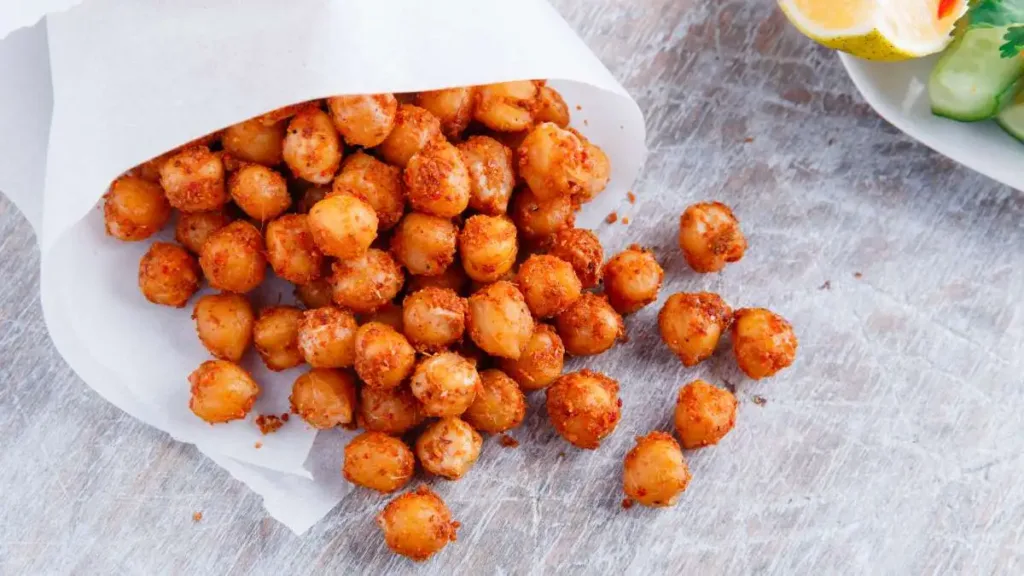
Preparation time: 40 minutes | Difficulty: Easy
Protein content: 7g | Calories: 120
Ingredients:
- 1 can (15 oz) chickpeas, drained, rinsed and thoroughly dried
- 1 tablespoon olive oil
- 1/2 teaspoon smoked paprika
- 1/2 teaspoon ground cumin
- 1/4 teaspoon garlic powder
- 1/4 teaspoon cayenne pepper (adjust to taste)
- 1/4 teaspoon salt
Instructions:
- Preheat oven to 400°F (200°C).
- Pat chickpeas very dry with paper towels, removing any loose skins.
- In a bowl, toss chickpeas with olive oil and spices until evenly coated.
- Spread in a single layer on a baking sheet.
- Roast for 30-35 minutes, shaking the pan halfway through, until chickpeas are crispy.
- Allow to cool completely before storing in an airtight container.
These crunchy, spiced chickpeas satisfy the craving for something crispy and savory while providing plant-based protein and fiber. Their portable nature makes them perfect for on-the-go snacking or as a salad topper.
10. Turkey and Cheese Roll-Ups with Cucumber
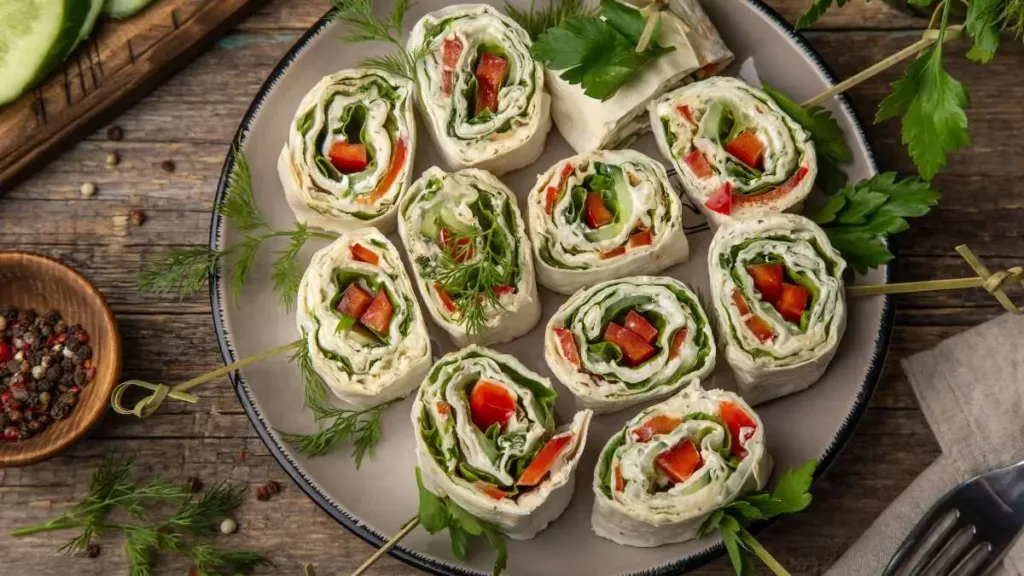
Preparation time: 5 minutes | Difficulty: Easy
Protein content: 15g | Calories: 150
Ingredients:
- 3 slices nitrate-free turkey breast
- 3 slices reduced-fat Swiss cheese
- 1 medium cucumber, cut into sticks
- 1 teaspoon Dijon mustard (optional)
- Fresh ground pepper
Instructions:
- Lay turkey slices flat on a cutting board.
- Place a slice of cheese on each turkey slice.
- Spread a thin layer of mustard if desired.
- Place 2-3 cucumber sticks at one end of each slice.
- Roll up tightly and secure with a toothpick if needed.
- Season with fresh ground pepper.
This simple, no-cook snack provides quality protein from both turkey and cheese while the cucumber adds refreshing crunch and hydration with minimal calories. The combination of protein and vegetable fiber helps maintain satiety between meals.
11. Edamame Hummus with Veggie Dippers
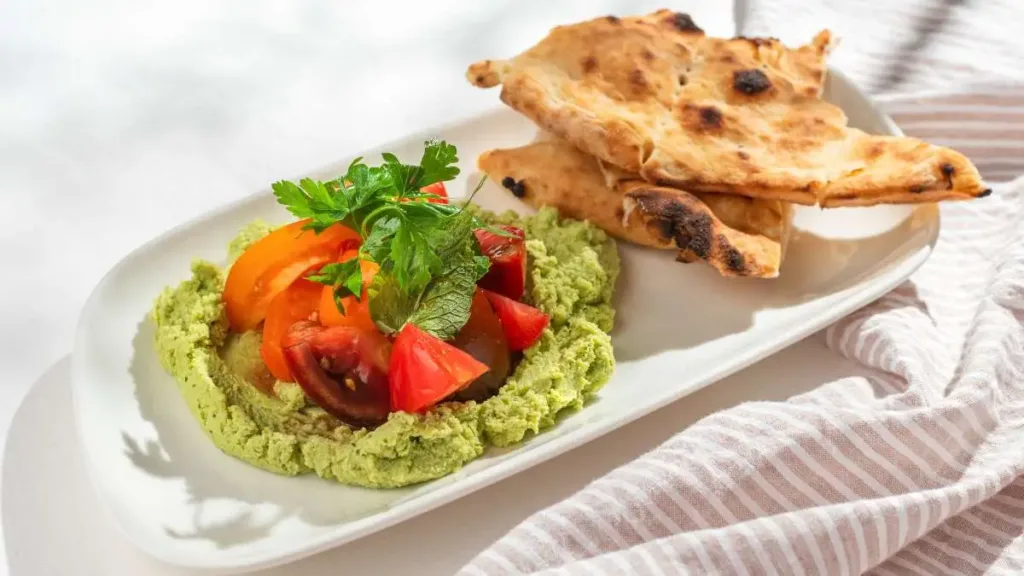
Preparation time: 15 minutes | Difficulty: Easy
Protein content: 9g | Calories: 165
Ingredients:
- 1 cup shelled edamame, cooked and cooled
- 1 tablespoon tahini
- 1 tablespoon olive oil
- 1 tablespoon lemon juice
- 1 small garlic clove
- 1/4 teaspoon ground cumin
- 2 tablespoons water
- Salt and pepper to taste
- Assorted vegetables for dipping (bell peppers, carrots, celery, cucumber)
Instructions:
- Combine edamame, tahini, olive oil, lemon juice, garlic, and cumin in a food processor.
- Process until smooth, adding water as needed to reach desired consistency.
- Season with salt and pepper to taste.
- Serve with raw vegetable dippers.
- Store in an airtight container in the refrigerator for up to 5 days.
This protein-rich alternative to traditional hummus provides all nine essential amino acids from edamame (soybeans), making it a complete protein source. Paired with fiber-rich vegetables, it creates a satisfying snack that supports blood sugar stability.
12. Cottage Cheese Stuffed Mini Peppers
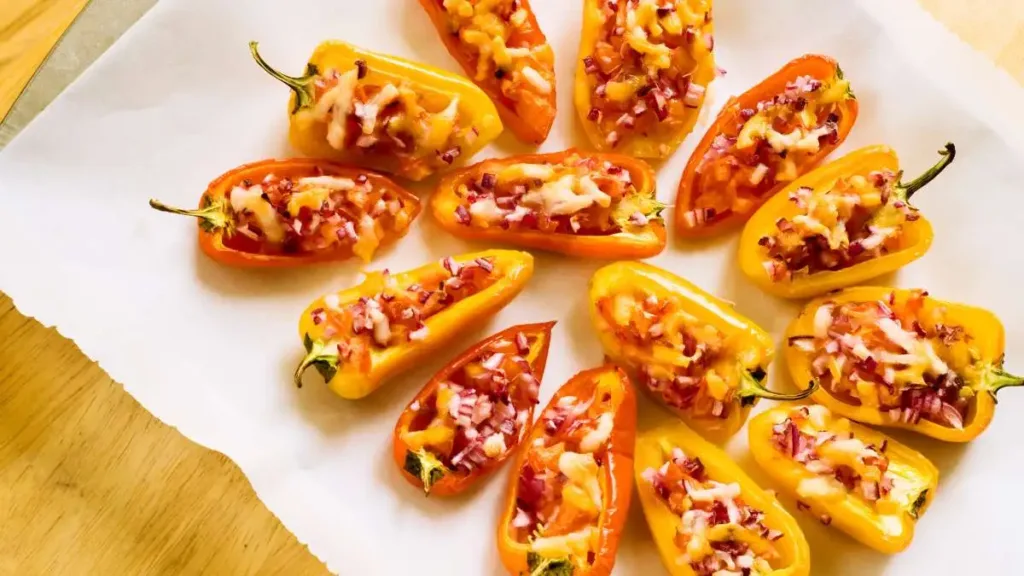
Preparation time: 10 minutes | Difficulty: Easy
Protein content: 14g | Calories: 140
Ingredients:
- 1/2 cup low-fat cottage cheese
- 6 mini sweet peppers, halved and seeded
- 1 tablespoon chopped chives
- 1/4 teaspoon garlic powder
- 1/4 teaspoon smoked paprika
- Fresh ground black pepper
- Optional: hot sauce to taste
Instructions:
- In a small bowl, mix cottage cheese with chives, garlic powder, and black pepper.
- Fill each pepper half with cottage cheese mixture.
- Sprinkle with smoked paprika and additional chives.
- Add a few drops of hot sauce if desired.
This colorful snack combines the slow-digesting casein protein from cottage cheese with the crunch and vitamins of fresh peppers. The high water and protein content makes this snack exceptionally filling despite its low calorie count.
Protein Smoothies/Drinks
13. Green Protein Recovery Smoothie
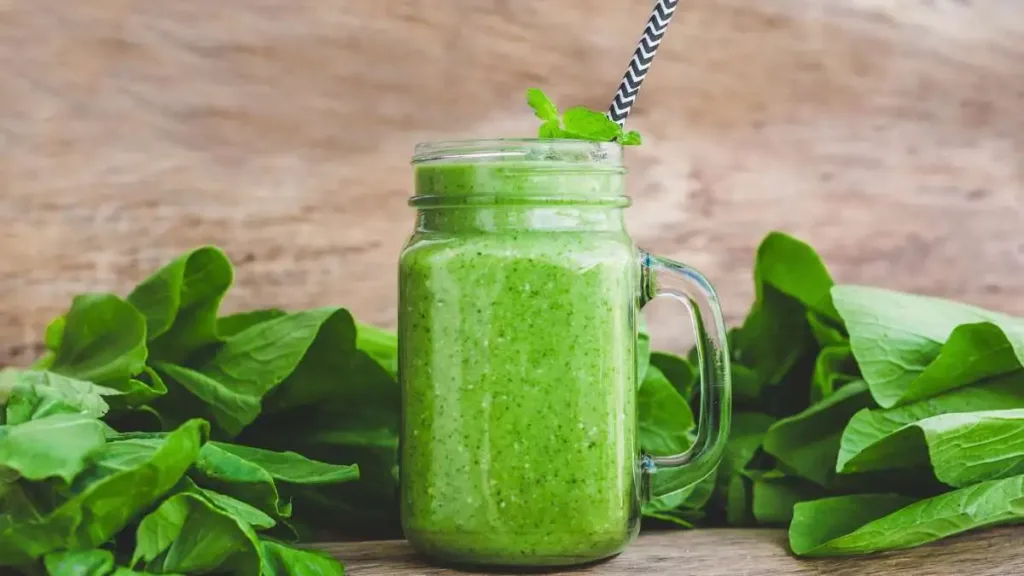
Preparation time: 5 minutes | Difficulty: Easy
Protein content: 25g | Calories: 280
Ingredients:
- 1 scoop (25g) unflavored or vanilla protein powder
- 1 cup unsweetened almond milk
- 1 cup fresh spinach
- 1/2 small avocado
- 1/2 frozen banana
- 1/2 cup frozen pineapple chunks
- 1 tablespoon chia seeds
- 1/2 inch piece fresh ginger (optional)
- 4 ice cubes
Instructions:
- Place all ingredients in a high-speed blender.
- Blend until smooth and creamy, about 60 seconds.
- If too thick, add small amounts of water until desired consistency is reached.
This nutrient-dense smoothie provides high-quality protein while the combination of healthy fats from avocado and chia seeds promotes satiety. The greens and fruits add essential vitamins, minerals, and antioxidants supporting overall health during weight loss.
14. Chocolate Cherry Protein Shake
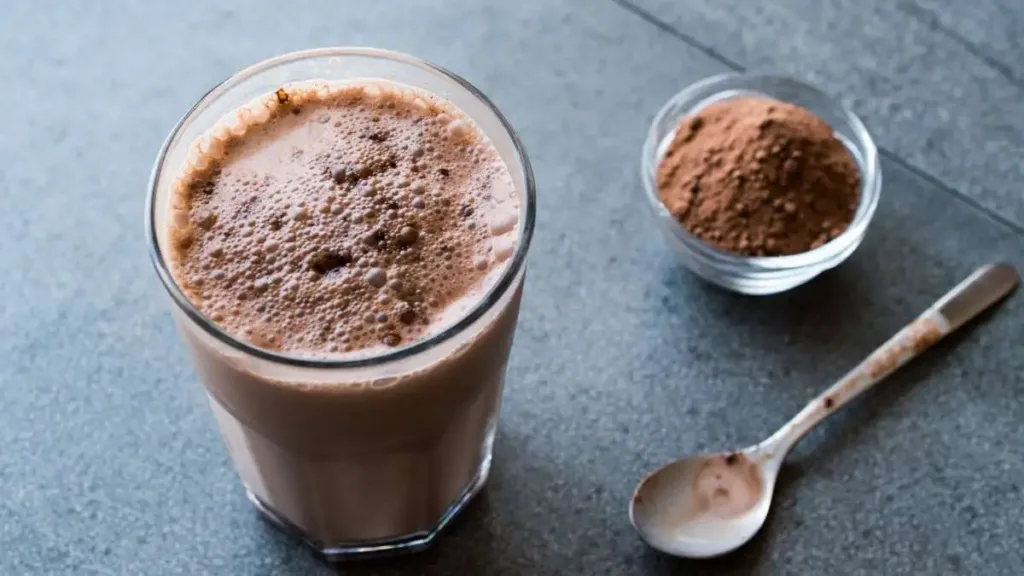
Preparation time: 5 minutes | Difficulty: Easy
Protein content: 30g | Calories: 260
Ingredients:
- 1 scoop (25g) chocolate protein powder
- 1 cup unsweetened almond milk
- 1/2 cup frozen cherries
- 1 tablespoon unsweetened cocoa powder
- 1 tablespoon ground flaxseed
- 1/2 teaspoon vanilla extract
- Pinch of cinnamon
- 4-5 ice cubes
Instructions:
- Combine all ingredients in a blender.
- Process until smooth and creamy.
- Pour into a glass and sprinkle with additional cinnamon if desired.
This indulgent-tasting shake satisfies chocolate cravings while providing exceptional nutrition. The antioxidants from cherries and cocoa powder support recovery and reduce inflammation, while flaxseed adds omega-3 fatty acids and additional fiber.
15. Iced Protein Coffee
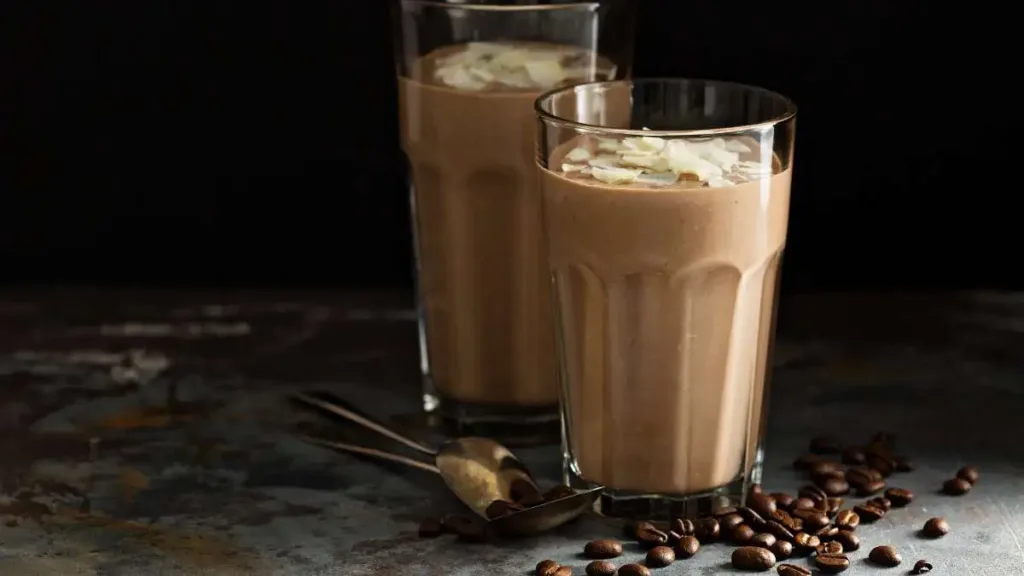
Preparation time: 5 minutes | Difficulty: Easy
Protein content: 22g | Calories: 140
Ingredients:
- 1 scoop (25g) vanilla or unflavored protein powder
- 1 cup cold brew coffee
- 1/2 cup unsweetened almond milk
- 1/2 teaspoon cinnamon
- 1/4 teaspoon vanilla extract
- Ice cubes
- Optional: stevia or monk fruit sweetener to taste
Instructions:
- In a shaker bottle, combine protein powder, coffee, almond milk, cinnamon, and vanilla.
- Shake vigorously until well blended.
- Pour over ice and add sweetener if desired.
- For a frothier texture, blend all ingredients in a blender.
This energizing beverage combines the metabolic benefits of caffeine with satiating protein, making it perfect for morning or pre-workout consumption. The protein helps moderate the caffeine absorption for sustained energy without crashes.
AdvertisementTips for Incorporating Protein into Your Diet
While focusing on protein-rich foods should be your primary strategy, some people find that certain supplements can support their weight loss journey. For a comprehensive guide on evidence-based weight loss supplements that may complement your high-protein approach, check out our detailed review of the best weight loss supplements.
Consistently including protein-rich foods doesn’t have to be complicated or expensive. These practical strategies can help make high-protein eating sustainable for the long term:
Meal Preparation Strategies:
- Dedicate 1-2 hours weekly to batch cooking protein sources like grilled chicken, hard-boiled eggs, and beans.
- Portion proteins immediately after cooking into individual containers for grab-and-go convenience.
- Keep pre-portioned protein sources visible in your refrigerator to encourage healthier choices.
Budget-Friendly Protein Sources:
- Eggs cost approximately $0.20 each and provide 6g of complete protein.
- Canned tuna in water offers about 22g protein per serving at roughly $1 per can.
- Dried lentils provide 18g protein per cooked cup at less than $0.50 per serving.
- Plain Greek yogurt can be purchased in large containers for significant savings over individual portions.
Time-Saving Preparation Tips:
- Use a slow cooker or pressure cooker for hands-off protein preparation.
- Leverage grocery store conveniences like rotisserie chicken and pre-cooked shrimp.
- Keep single-serving protein pouches (tuna, salmon, chicken) in your desk or bag for emergency options.
- Pre-portion protein powder into small containers or bags for quick smoothie preparation.
By strategically planning your protein consumption, you can maintain a satiety-promoting diet pattern that supports weight management without adding significant time or financial burden.
AdvertisementCommon Mistakes to Avoid
Even with the best intentions, several pitfalls can undermine your protein-focused approach to weight management:
Overconsumption Trap: While protein is beneficial, excessive intake doesn’t provide additional benefits and may stress kidneys in susceptible individuals. Focus on distribution throughout the day rather than massive portions at single meals.
Neglecting Quality: Not all protein sources are created equal. Heavily processed protein bars and shakes often contain added sugars, artificial ingredients, and excessive calories. Prioritize whole food sources whenever possible, using supplements strategically rather than as foundations.
Ignoring Balance: A diet exclusively focused on protein neglects other essential nutrients. Ensure meals include quality carbohydrates, healthy fats, and plenty of vegetables to support overall health and sustainable weight management.
The “Protein Passes for Everything” Mindset: Some mistakenly believe high protein content justifies other nutritional compromises. A protein bar with 15g of added sugar or deep-fried chicken still presents metabolic challenges despite protein content.
Monotonous Eating: Relying on the same few protein sources leads to palate fatigue and nutritional gaps. Diverse protein sources provide different amino acid profiles and micronutrients, supporting comprehensive nutrition.
By avoiding these common mistakes and maintaining a balanced approach to protein consumption, you’ll create a sustainable nutritional pattern that supports both short-term weight loss and long-term health.
FAQs About Protein and Weight Loss
Can I eat too much protein while trying to lose weight?
While protein offers many benefits for weight management, excessive consumption (generally above 2.2g per kg of body weight) provides no additional advantage and may place unnecessary stress on kidneys in predisposed individuals. Focus on quality and distribution throughout the day rather than maximizing total quantity.
Will protein make me gain muscle and increase my weight?
Protein alone doesn’t build significant muscle mass—this requires resistance training stimulus. During weight loss, adequate protein primarily preserves existing muscle while calorie deficit targets fat stores. This muscle preservation is beneficial, as it maintains metabolic rate and creates a more toned appearance as fat is lost.
Does the timing of protein consumption matter?
Research suggests distributing protein intake throughout the day optimizes muscle synthesis and satiety benefits. Aim for 20-30g per meal and 10-15g in snacks rather than concentrating intake in a single meal. Including protein at breakfast may be especially beneficial for controlling appetite throughout the day.
Are plant proteins as effective as animal proteins for weight loss?
Plant proteins can be equally effective when consumed strategically. While some plant sources contain incomplete amino acid profiles, combining complementary plants (like beans and rice) or consuming diverse plant proteins throughout the day ensures adequate essential amino acid intake. Plant proteins offer the additional benefit of fiber, which further promotes satiety and digestive health.
Do I need protein supplements to lose weight effectively?
No, whole food protein sources are generally preferable to supplements. However, protein powders and prepared drinks can be convenient options when whole foods aren’t practical. If using supplements, choose minimally processed varieties without added sugars, artificial ingredients, or excessive additives.
Incorporating protein-rich recipes into your daily routine creates a foundation for successful, sustainable weight management. Unlike restrictive diets that leave you feeling deprived, this approach focuses on nourishment and satisfaction—addressing the biological factors that often derail weight loss efforts rather than relying solely on willpower.
The recipes shared in this collection demonstrate that high-protein eating can be flavorful, diverse, and practical for everyday life. From quick breakfasts to satisfying dinners and strategic snacks, these options provide the nutritional framework to support your body’s needs while creating the calorie deficit necessary for weight loss.
Remember that consistency, not perfection, drives lasting results. Focus on incorporating these protein-centered strategies most days while allowing flexibility for special occasions and personal preferences. By building meals around quality protein sources complemented by vegetables, fruits, and whole grains, you’re not just following a “diet”—you’re establishing sustainable habits that support both weight management and overall wellbeing.
Share Your Journey!
Have you tried any of these high-protein recipes? We’d love to hear about your experience in the comments below! Which one became your favorite? Did you make any modifications that worked well? Your insights might inspire others on their weight loss journey.
Looking for more specialized support? Check out our related articles on vegetarian protein sources, protein-focused meal planning, and the science of metabolism during weight loss.
Advertisement